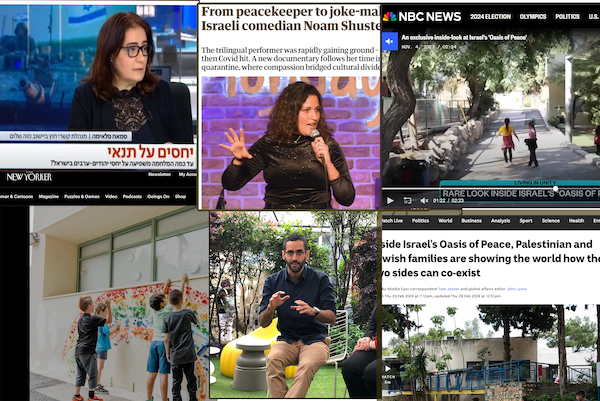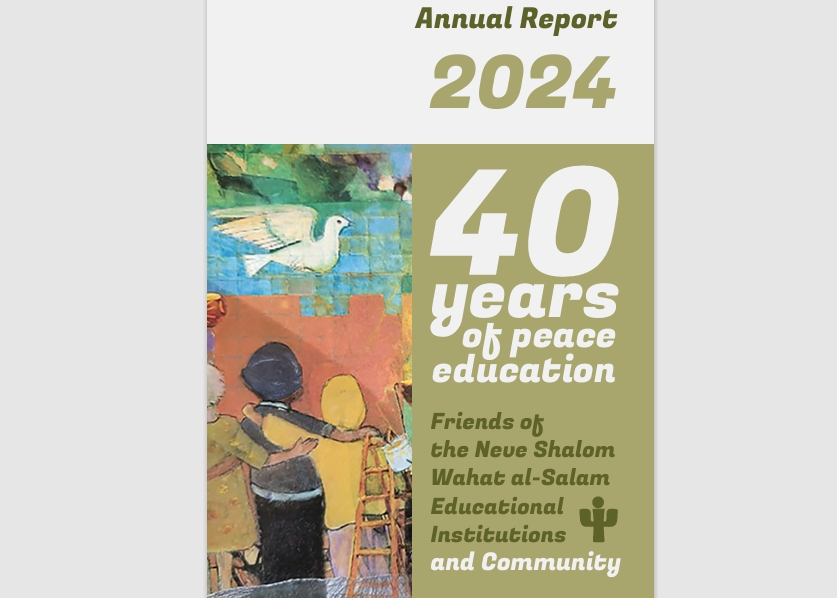April and May are full of holidays and special days in the school, of learning about the religions of others and the children reaffirming their own identities.
The first-graders enjoyed a “backwards day,” in which the kids teach and the teacher take a seat in the back of the class. They get to go out of the classroom for their forest lessons, and they took a walk to “anemone hill” where the wildflowers were changing over to late Spring blooms.
They also practiced outdoor language, in this case learning to write new Arabic words in chalk on the sidewalk.
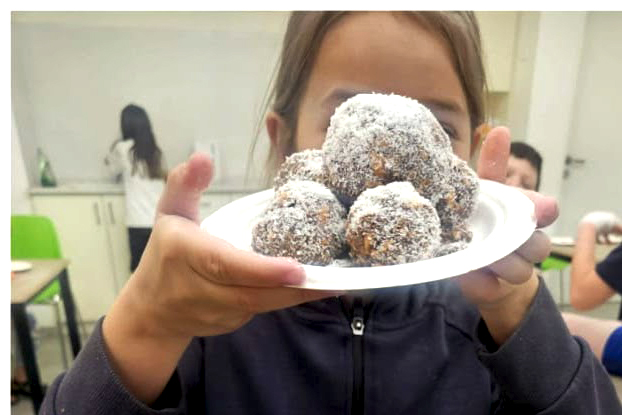
The families of the second-grade class hosted Iftar meals in their homes during Ramadan, bringing together classmates and their families to participate in the meal. They learned about the other two holidays that overlapped Ramadan – Easter and Pesach, enjoying art projects to learn about the symbols of each.
The kids learning Arabic as a second language learned the names of professions, and they used these to create a quiz in Arabic. They also had some fun origami-based math lessons, folding paper to explore the idea of fractions.
Shavuot is the last holiday of the school year. After learning about the holiday, the kids enjoyed a special holiday breakfast together.
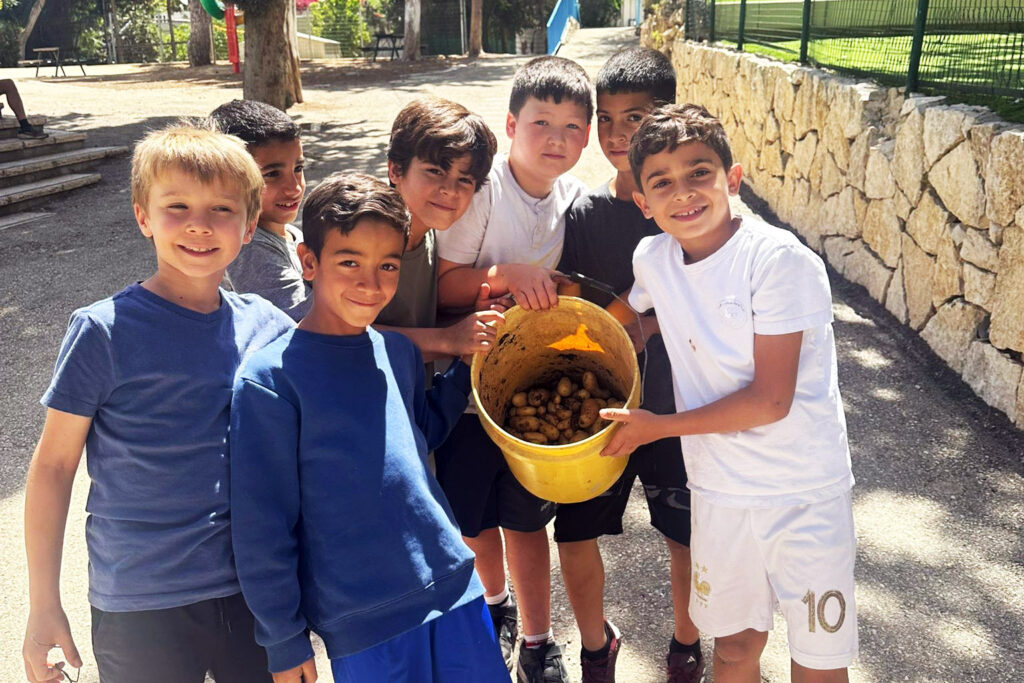
In third grade, the presentations continued as the children researched issues that interest them and presented their findings to the class. The native Hebrew speakers combined language and science, learning about mimicry and camouflage in nature and among humans.
Shireen, a parent, came to teach the kids how to make paper lanterns for Ramadan. In their HOTAM lessons, they learned about identity and belonging, each investigating the circles of belonging surrounding them, as well as the belonging engendered in the community of Wahat al-Salam – Neve Shalom.
The kids who worked in the garden with Yohai and Uri, learning about nature as they worked, got to eat the fruits – or in this case roots – of their labor: potatoes. Those learning Arabic as a second language had tasty lessons as well, learning about recipe terms. After investigating various recipes, they made chocolate balls together.

The fourth-graders had some fun math lessons with games and puzzles, working in small groups that demanded cooperation to complete the tasks. They also had enriching lessons on the three religions that included games and activities as well as digital media.
The native Hebrew speakers had a section they called “What’s behind the mask?” in which they delved into the history of masks in different cultures, learned to investigate and read material critically and present their findings to the class. For their HOTAM identity and belonging section, they made themselves ID cards on which they wrote their hobbies, likes and dislikes, and they worked on self-portraits.

They also presented subjects to the class that they had worked on in pairs, showing polished digital presentations.
The fifth-graders had a backwards day that included Korean lessons and fun activities.
English is already their third language. Some English classes are in the Language Center; in another lesson, the kids paired up to discuss an assigned subject and then sum up their discussions for the class.
The fifth-graders had a class trip to the Zipori river, where they got to splash around.

The sixth-graders learned English all over the place, including working on their lessons in the school yard and playing English word bingo in the Language Center. The native Arabic speakers made Arabic comics based on their lessons or on books they had read.
Just before the holidays, the sixth-graders organized a Seder Pesach complete with chocolate-covered matza and traditional songs.
Special days and events
Science fair: Following the highly popular school science fair, two group projects were chosen to represent the school in the regional science fair. These were an investigation of the effects of electronic devices on concentration among their fellow students and the invention of a “smart mirror” that can give makeup suggestions. Each group took a booth and explained their project to all passersby in the fair.
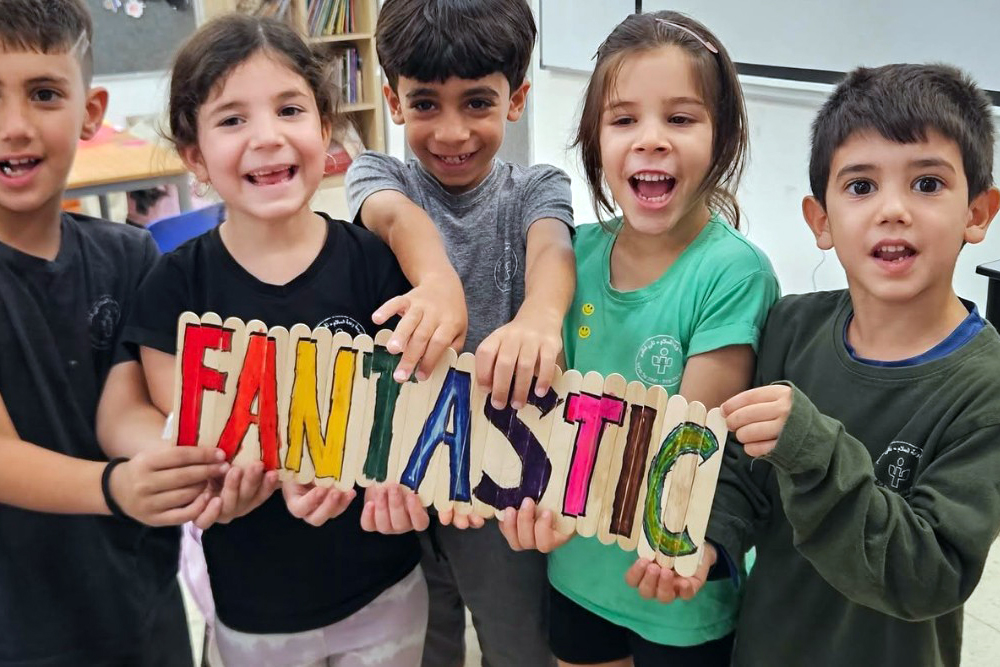
Math day is a part of the math teachers’ mission to make math fun for everyone. This year’s math fest included crafts, quizzes, number games and more.
Every language has its day, and May 23 was English day. Some native English speakers from first grade led off the activities, and the day ended with a competitive spelling bee. At the end of the spelling bee, three kids had managed to spell all the words correctly. Polly, the art teacher who is a native English speaker, organized the day.
Good Deeds Day: This year, the kids decided to help out by cleaning up the area surrounding the school, thereby contributing to both the school and the village.
Good behavior: Teachers selected the children who exhibited excellent behavior – not just following the rules but watching out for others and helping other kids. This is the spirit the school works to engender, and these children received special certificates and were held up as role models for others.
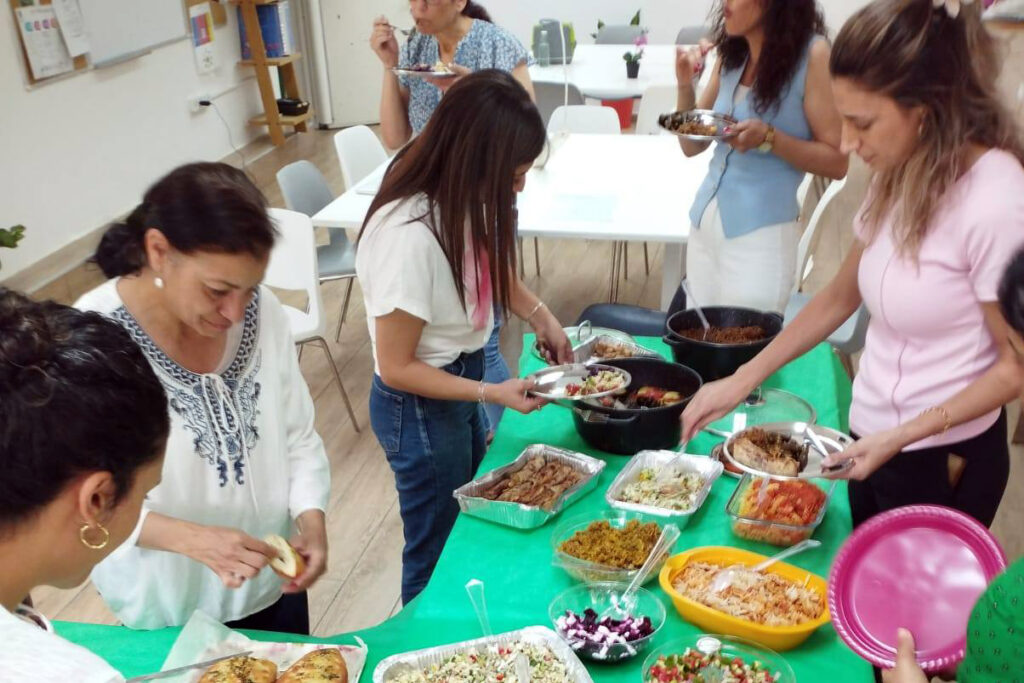
Teacher appreciation: The parents prepared a special meal for the teachers in appreciation of their work. The teachers felt it was an important reminder that parents and teacher must collaborate closely for the school to be a success.

